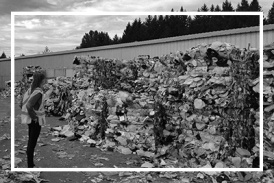Author Shares Story of One Man’s Escape and Renewal
Charlie Lord wasn’t broken overnight. Like many men, he spent years doing what was expected—succeeding in the system, providing for his family, staying in line. But when the cracks become impossible to ignore, he makes a decision most only dream of: he disappears. He doesn’t run from life—he runs toward what life is supposed to be.
A Man on the Edge of a Lost World
Set in a country drowning in digital noise, empty ideologies, and performative faith, Charlie’s exodus is both personal and cultural. The novel speaks to anyone who’s ever felt suffocated by false promises, shallow connections, and the pressure to be someone they’re not.
This is not a hero’s journey in the traditional sense. There’s no spotlight, no applause. Just a man, alone in the woods, stripping away every label, memory, and mask—until all that’s left is something raw and sacred: a soul in search of rest.
Themes explored in the novel include:
• The silence beneath the chaos – How solitude can become sacred
• Masculinity and meaning – What it means to be strong in a hollow age
• Mental unraveling as spiritual awakening – Turning breakdown into breakthrough
• Fatherhood beyond presence – The weight and wonder of trying to guide another soul while still finding your own
Wetmore writes with honesty and poetic grit. Readers will find themselves not only following Charlie’s journey but confronting their questions about identity, sanity, and the soul’s deep hunger for truth.
About the Author
Bill Wetmore is a Harvard graduate and award-winning filmmaker whose storytelling blends emotional depth with cultural insight. With The Exodus of Charlie Lord, Wetmore shifts to fiction—delivering a haunting and timely novel that challenges readers to slow down, pay attention, and remember who they are.
Availability & Contact
The Exodus of Charlie Lord is now available in print and digital formats via major online retailers.
For review copies, interviews, speaking engagements, or more information, check out the following channels:
Book Link: https://a.co/d/0oqD38H
Bill Wetmore
Bookwave Publishing
email us here
Visit us on social media:
Facebook
Instagram
Other
Legal Disclaimer:
EIN Presswire provides this news content "as is" without warranty of any kind. We do not accept any responsibility or liability for the accuracy, content, images, videos, licenses, completeness, legality, or reliability of the information contained in this article. If you have any complaints or copyright issues related to this article, kindly contact the author above.
Neuroscience Based Medications Offer Hope in Addiction Crisis, Says NYC Doctor
Protection Tax Supports Small Business Owners Facing Complex IRS Challenges
Dialogue with Three Chords and brooklynONE Productions Celebrate Pride Month with Night of Original Theatre
Kalendarium
Więcej ważnych informacji
 Jedynka Newserii
Jedynka Newserii

 Jedynka Newserii
Jedynka Newserii

Handel

Ze względu na różnice w cenach surowce wtórne przegrywają z pierwotnymi. To powoduje problemy branży recyklingowej
Rozporządzenie PPWR stawia ambitne cele w zakresie wykorzystania recyklatów w poszczególnych rodzajach opakowań. To będzie oznaczało wzrost popytu na materiały wtórne pochodzące z recyklingu. Obecnie problemy branży recyklingu mogą spowodować, że popyt będzie zaspokajany głównie przez import. Dziś do dobrowolnego wykorzystania recyklatów nie zachęcają przede wszystkim ceny – surowiec pierwotny można kupić taniej niż ten z recyklingu.
Przemysł spożywczy
Rośnie presja konkurencyjna na unijne rolnictwo. Bez rekompensat sytuacja rolników może się pogarszać

Rolnictwo i żywność, w tym rybołówstwo, są sektorami strategicznymi dla UE. System rolno-spożywczy, oparty na jednolitym rynku europejskim, wytwarza ponad 900 mld euro wartości dodanej. Jego konkurencyjność stoi jednak przed wieloma wyzwaniami – to przede wszystkim eksport z Ukrainy i niedługo także z krajów Mercosur, a także presja związana z oczekiwaniami konsumentów i Zielonym Ładem. Bez rekompensat rolnikom może być trudno tym wyzwaniom sprostać.
Transport
Infrastruktury ładowania elektryków przybywa w szybkim tempie. Inwestorzy jednak napotykają szereg barier

Liczba punktów ładowania samochodów elektrycznych wynosi dziś ok. 10 tys., a tempo wzrostu wynosi ok. 50 proc. r/r. Dynamika ta przez wiele miesięcy była wyższa niż wyniki samego rynku samochodów elektrycznych, na które w poprzednim roku wpływało zawieszenie rządowych dopłat do zakupu elektryka. Pierwszy kwartał br. zamknął się 22-proc. wzrostem liczby rejestracji w ujęciu rocznym, ale kwiecień przyniósł już wyraźne odbicie – o 100 proc.
Partner serwisu
Szkolenia

Akademia Newserii
Akademia Newserii to projekt, w ramach którego najlepsi polscy dziennikarze biznesowi, giełdowi oraz lifestylowi, a także szkoleniowcy z wieloletnim doświadczeniem dzielą się swoją wiedzą nt. pracy z mediami.









.gif)

 |
| |
| |
|